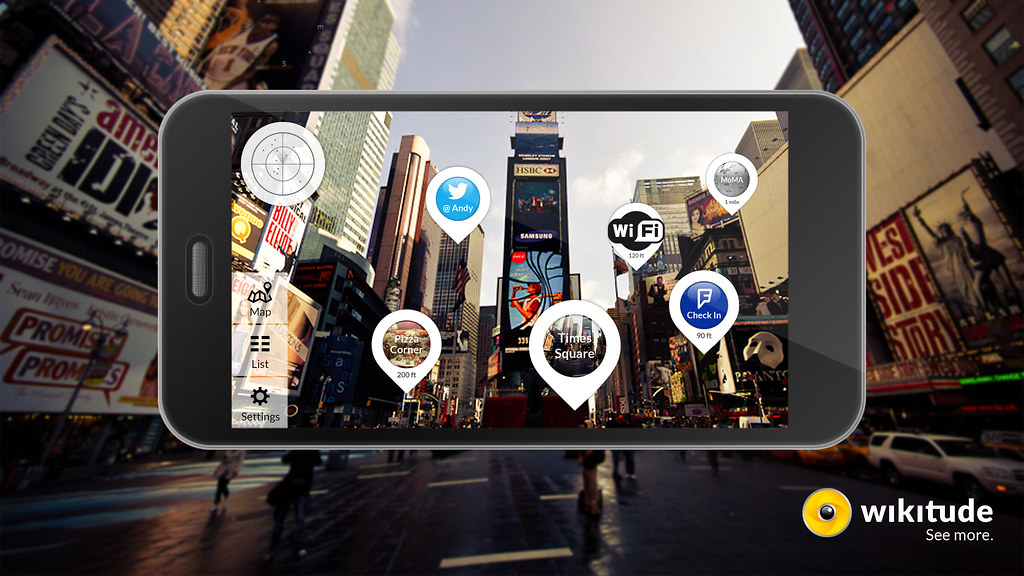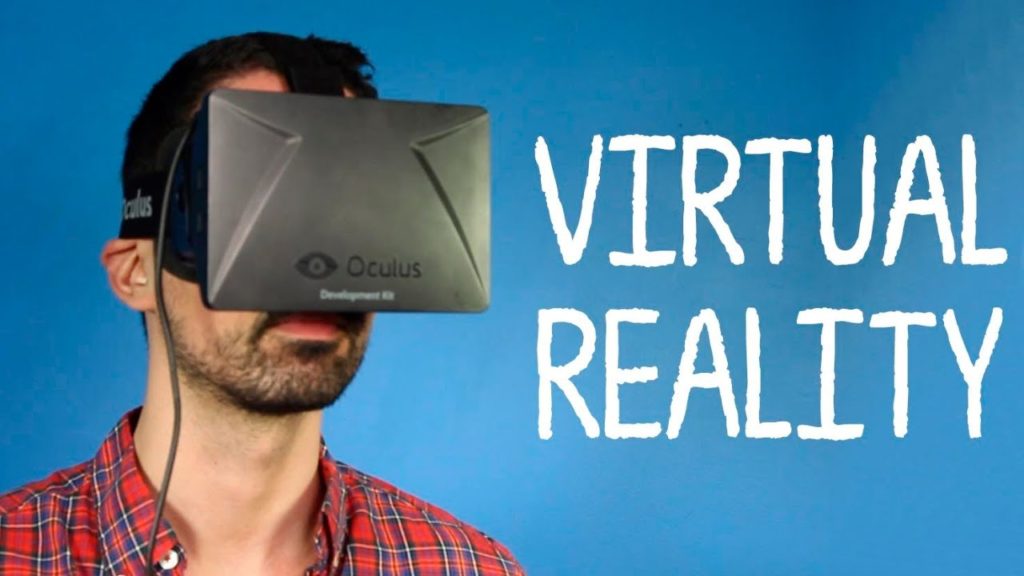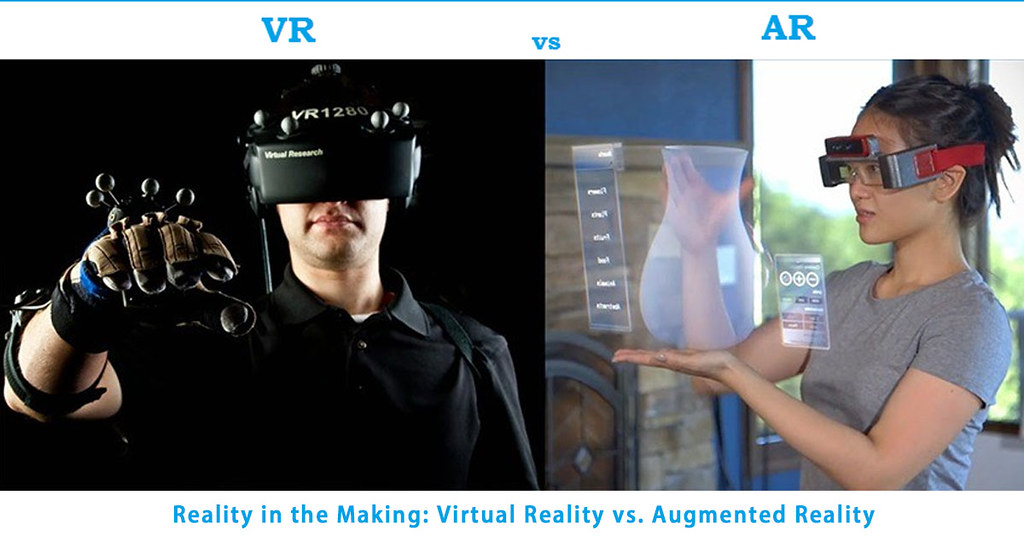One of the greatest confusions in the world of technology these days is the difference between Augmented Reality (AR) and Virtual Reality (VR). Both attract a lot of media attention and are promising tremendous growth. So, what is the difference between Virtual Reality and Augmented Reality? This article will help you understand how not to confuse one with the other.
What is Augmented Reality (AR)?

Augmented Reality (AR) is also known as “expanded reality” and “amplified reality”. AR is a technology that allows us to superimpose virtual elements on our view of reality. Increasingly in demand, this technology will become a business that will generate around 120 billion dollars in the world in 2020.
The term was coined in 1992 by scientist and researcher Thomas P. Caudell during the development of one of the most famous planes in the world: the Boeing 747. Caudell noted that the workers responsible for assembling the new aircraft spent a lot of time interpreting the instructions and thought: what would happen if they had access to a monitor to guide them through the installation? The invention was not successful, but it was at that moment that the concept of Augmented Reality (AR) was born.
It was in 1992, then, that the concept of AR emerged, and not, as many believe, in the summer of 2016, when players were overwhelmed by the fever of Pokémon GO, a video game where the player must look for and capture different characters from the Japanese saga. At its peak, the game reached the astronomical mark of 45 million daily active users. Pokémon GO popularized AR. It brought this technology closer to the general public – to all audiences – but, at that time, there were already many companies in different sectors (health, education, architecture, services, retail, etc.) that started using it for the purpose of creating value experiences for their customers.
What is Virtual Reality (VR)?

Virtual Reality (VR) is an interface technology capable of deceiving a user’s senses, through a virtual environment created from a computer system. By inducing visual, sound and even tactile effects, VR allows complete immersion in a simulated environment, with or without user interaction. Currently, VR is based on stereoscopic displays such as glasses and headsets, being mostly disseminated for entertainment. However, the concept encompasses much more than visual effects and it has been around for a long time.
The term Virtual Reality was first used in the book The Theatre and its Double (Le Théâtre et son double), by the French author Antonin Artaud, in 1938. Although he is not a science fiction author, Antonin practically coined the term when suggesting a theater where ‘the natural illusion of characters and objects created a virtual reality’.
Even without the term, there were already experiments that “transported” people to other places. The famous stereoscopic glasses with 3D tourist attractions cards have existed since the 1920s. They are the great-grandparents of the VR glasses that we know today.
In 1939, the View-Master was presented to the world at the International Science Fair in New York. The device was stereoscopic glasses that served to view slides on a disc. The device became an extremely popular toy. Recently, Google and Mattel announced a new version of the gadget.
The Key Differences and Similarities Between VR and AR

The first point to keep in mind when we ask about Augmented Reality is that it is very different from Virtual Reality. VR concerns an immersive environment created through computational tools in which the user performs certain tasks. A good example of VR is The Sims game franchise. AR designates the interaction between virtual environments and the physical world. A good example of AR is the QR Code tags on touristic points of cities.
Through the reader application of this type of label installed on a tablet or smartphone and with an internet connection, you can access a kind of virtual guide, which indicates the places to which the tourist should go (including tracing the route to get to the location) and, when you arrive, show the history, curiosities, tour options and everything else that is pertinent. With this in mind, it is not necessary to go very far to imagine why AR is so highly sought in several fields, including marketing and advertising.
Because VR uses a closed computing environment, using this tool only makes sense for very specific niche companies: entertainment, games, communication, technology and internet security. This requires the dedication of programmers and other professionals, including increased construction time, testing and then application. Campaigns with AR have benefits that VR does not cover, such as greater reach to different audiences, less need for programming and facilities, more economical investment, greater engagement with users and faster results.
Used Devices and Applications
Retail companies provide us with the greatest examples of AR in everyday life. In 2013, IKEA launched an application so that the public could view its product catalog from home through a camera. This way, customers could already have an idea of the actual size and of the design of the room.
Another example is the makeup mirror from Shiseido. The mirror, actually a monitor with AR, was exposed at a sales point so that customers could test the application of different products on the screen, helping to find the right colors and suggesting ideas for use. Clothing and footwear stores usually offer this solution at their sales points or through applications for the public to access at any time. The idea in these examples of AR is to display the pieces on the customer’s body, helping them decide on the purchase.
Other applications of AR are related to communication, education and the arts. Newspapers, magazines and also advertisements can use the technology through QR Codes, displaying videos or presenting products directly on users’ screens. In marketing campaigns, especially, AR is used as a solution to some problem or question from the public, and not necessarily as an aggressive advertisement to get sales immediately.
Virtual Reality, in its most common form, works through visual and auditory stimuli. It is common to use headsets that completely cover the eyes and ears, depriving the user of hearing and seeing external stimuli.
Projects like Sony’s PlayStation VR promise to completely transport the individual into a game, with total immersion, both visual and auditory. In this type of virtual reality interface, you can look to all sides without having to interact with the controller, just by turning your face around. The Sony headset also includes the option to use headphones for more complete immersion.
It is not always AR as opposed to VR, as they do not always operate independently of one another, and, in fact, are often blended to generate an even more immersive experience. For example, haptic feedback, which is the vibration and sensation added to interaction with graphics, is considered an augmentation. However, it is commonly used within a VR setting in order to make the experience more lifelike though touch.
VR and AR are great examples of experiences and interactions fueled by the desire to become immersed in a simulated land for entertainment, or to add a new dimension of interaction between digital devices and the real world. They are undoubtedly opening up worlds, both real and virtual alike, and revolutionizing technology.
You may also like to read:

Author Bio:
Beatrix Potter is an IT specialist at Essay Writing Services and Research Paper Writing Services, with a focus in Digital Marketing. She contributes to numerous websites and publications, and she’s also a writer at Best British Essays service.